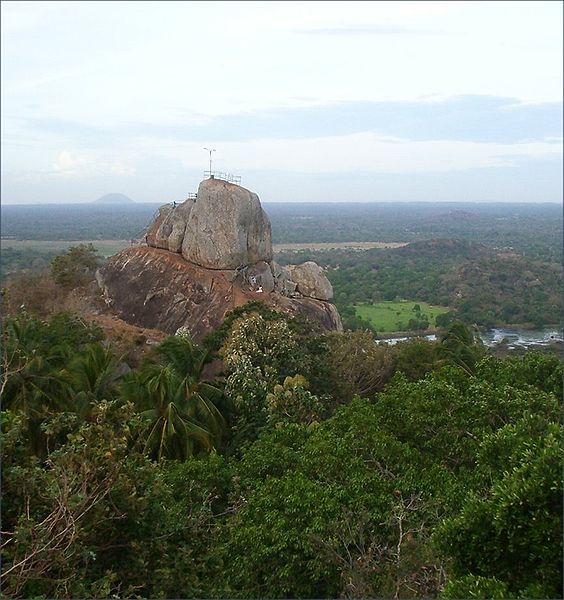
Mihintale Rock by Jolle~commonswiki assumed (based on copyright claims). [GFDL or CC-BY-SA-3.0], via Wikimedia Commons
The Mihintale rock plays a significant role during the Poson Festival which is held during the month of June, since it is said that it was in Mihintale where King Devanampiyatissa of Sri Lanka was converted to Buddhism by the Arahat Mahinda who came from India. With this legend Mihintale has become the main site for festive activities during Poson and many locals and foreigners visit Mihintale during this season to perform religious rites as well as for leisure.
There are many religious activities organized during the period of Poson including Sil Campaigns and Bodhi Poojas in temples in which only Buddhists participate. Dansal which are set up with the aim of giving away food and beverage to people sees the participation of all religious and ethnic groups.
Generally a Dansala is organized by a group of people or an individual and various food such as rice and curry, sandwiches, boiled chickpeas as well as tea, coffee and fruit juices are served to those who visit the Dansala free of charge as a charitable act.
There are several other rituals that come with Poson. Devotional songs are sung by Buddhists in every nook and corner while Poson Pandols which are colourfully lit illustrations from the 550 Jataka Katha or the 550 past life stories of the Lord Buddha can also be seen in plenty in every city of the country. These pandols are veritable sights glistening at night and many people from around the country come to see them in the late evening till past midnight.
Sri Lanka is a country that is rich in tradition and culture; you will find that the people are hospitable and easy to talk to. There is much to see in this beautiful island and the mouthwatering local cuisines must be tasted if you make a visit to the country.
Travelling in the country is quite safe and you will find Sri Lanka car rental services such as the Malkey rent a car that offers vehicles that are comfortable and in good condition to travel to any part of the country. You will be able to hire a vehicle for airport transfers Sri Lanka as well but make sure you go to a reliable source since you wouldn’t want to miss your flight!














 The period of transit from the last star sign to the first is supposed to be one of defame and bad luck and nothing auspicious is started during that period. In contrast, people try to engage in various religious activities or games and play items abstaining from their usual work, or studying or even for housewives their important household work.
The period of transit from the last star sign to the first is supposed to be one of defame and bad luck and nothing auspicious is started during that period. In contrast, people try to engage in various religious activities or games and play items abstaining from their usual work, or studying or even for housewives their important household work.
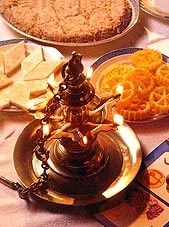
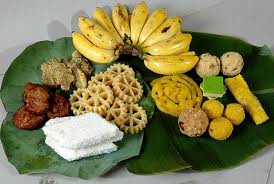 After these important rituals, the festive atmosphere truly sets in, with families meeting in the lanes, homes opened to welcome friends and relatives and children allowed to play. Fresh bananas are served to guests with the customary oil cakes, kevum and other sweetmeats. Special programmes are aired on state and private media to add to the festive spirit.
After these important rituals, the festive atmosphere truly sets in, with families meeting in the lanes, homes opened to welcome friends and relatives and children allowed to play. Fresh bananas are served to guests with the customary oil cakes, kevum and other sweetmeats. Special programmes are aired on state and private media to add to the festive spirit.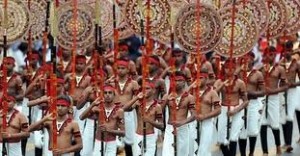 Sri Lanka’s National Day, also called Independence Day is a very important occasion for all Sri Lankans. On this day all Sri Lankan citizens unite to affirm their national pride and joy in the autonomy and unity of their country. This significant event falls on February 4th, the day on which independence was granted to the nation from the colonial power Britain in the year 1948. An important national holiday, this event is an occasion for countrywide celebrations with flag-raising ceremonies, parades, performances and dances.
Sri Lanka’s National Day, also called Independence Day is a very important occasion for all Sri Lankans. On this day all Sri Lankan citizens unite to affirm their national pride and joy in the autonomy and unity of their country. This significant event falls on February 4th, the day on which independence was granted to the nation from the colonial power Britain in the year 1948. An important national holiday, this event is an occasion for countrywide celebrations with flag-raising ceremonies, parades, performances and dances.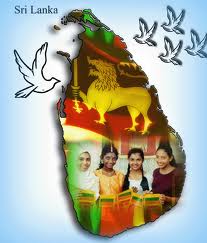

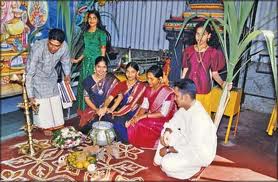 A harvest festival that has its origins in South India, Thai Pongal is a thanksgiving festival held in honour of the Sun God Surya. Occurring every year from January 13th to the 15th, the timing of Thai Pongal is calculated according to astronomic events. The festival coincides with the movement of the Sun to Makaram or Capricorn.
A harvest festival that has its origins in South India, Thai Pongal is a thanksgiving festival held in honour of the Sun God Surya. Occurring every year from January 13th to the 15th, the timing of Thai Pongal is calculated according to astronomic events. The festival coincides with the movement of the Sun to Makaram or Capricorn.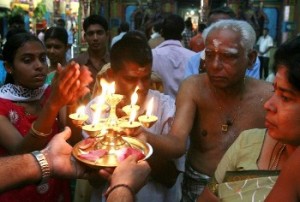 The day preceding Thai Pongal is celebrated as Maattu Pongal. Cattle are considered sacred by Hindus and their vital role as the animal used for ploughing during the early days, makes them also equally important. Decorated with sweet-smelling garlands and bright coloured powder, they are fed jaggery, fruits, honey and sugar cane.
The day preceding Thai Pongal is celebrated as Maattu Pongal. Cattle are considered sacred by Hindus and their vital role as the animal used for ploughing during the early days, makes them also equally important. Decorated with sweet-smelling garlands and bright coloured powder, they are fed jaggery, fruits, honey and sugar cane.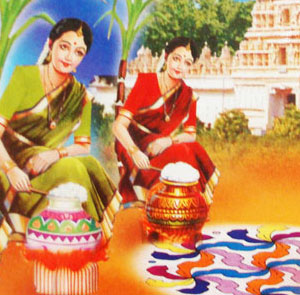 Hotel in Kalutara
Hotel in Kalutara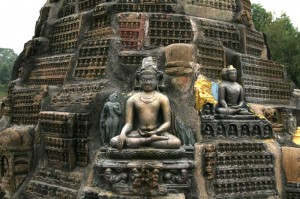 Considered the site where Lord Buddha obtained Enlightenment, Bodhgaya in India is a key attraction especially for Buddhist devotees. Those planning
Considered the site where Lord Buddha obtained Enlightenment, Bodhgaya in India is a key attraction especially for Buddhist devotees. Those planning